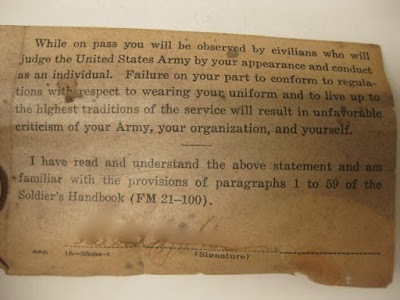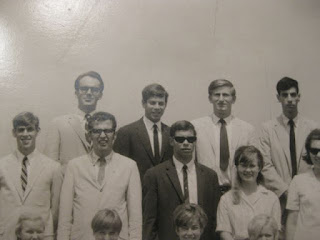Some time last year the head of Friends of Thailand (a group of former Peace Corps Volunteers) emailed members of Thai 19 (the 19th group of Peace Corps Volunteers to go to Thailand) to ask for something written to go into a book for the 50th Anniversary of Peace Corps Thailand in 2012.
I volunteered. It took a while to finally do it, but eventually it got done. I'd like to share it here. Especially with people serving in the Peace Corps somewhere around the world right now. Have a great year.
A Few Thoughts from a Thai 19 Peace Corps Volunteer
The bus hurtled around mountain curves through the black night, the red dirt road and dirty green jungle revealed by the ghostly glow of lightening. Then the rattling of every part of the bus would be swallowed by the head piercing boom of the thunder. After a week in Bangkok, then a few more days in Chiangmai with the other volunteers assigned to the North, I was now wondering if Iʼd survive to reach my teaching assignment in Kamphaengphet. After all the dialogues weʼd memorized and the lesson plans weʼd written and practice-taught to each other, the real thing was about to begin. If I survived this bus ride through the mountains. “Mai ben rai” I chanted. My favorite Thai phrase covering a lot of English situations in the general category of ʻno big deal.ʼ Mai ben rai, mai ben rai until the many grisly ways this bus ride could end faded and I fell asleep.
That was the end of phase one - preparing to be a Peace Corps volunteer. Weʼd spent two summers in DeKalb, Illinois learning Thai, learning TEFL (Teaching English as a Foreign Language), how to eat hot food, dance the ramwong, and survive temperatures and humidity in the high 90s. Back then - our first summer training was 1966 - Peace Corps was training college students between their junior and senior years, in hopes of snagging them before other recruiters did. That was when students got jobs when they graduated, and when the army was drafting males for Vietnam. The Peace Corps wanted to get us first. Then we returned to school, graduated, and returned to a second summer of training. While we lost a fair number of people during the school year, everyone who went to Thailand stayed the full two years (except one volunteer who was kicked out because she got married) and about a third of us stayed longer. Because we had one summer of training before our last year of college, I was able to become friends with several Thai students at UCLA and even to learn to play (badly) one song on a kind of Thai gong the ethnomusicology department had.

I could write volumes about the mistakes I made and less about the things I learned, but as someone whoʼs been a returned Peace Corps Volunteer for 40 years now, perhaps what I can contribute most is perspective on the burning questions most volunteers have: Am I doing any good here? After all that work, has anyone besides me gotten anything out of my being here? So let me tell you a couple of stories.
I had a student, letʼs call him Somsak. He was a bright student, but very poor. He was awkward with others and didnʼt have the fun loving demeanor and smiling face of most Thais. I helped Somsak study for national exams that would qualify him to go to an excellent private high school in Bangkok that would improve his chances of getting into college. He passed and was accepted at the school. When Iʼd first arrived in Bangkok, the well-to-do family of one of my UCLA Thai friends ʻadoptedʼ me and insisted I stay with them when I was in Bangkok. And Khun Mae and Khun Paw truly took care of me. I asked if Somsak could stay with them in Bangkok, and they agreed he could stay in the servant quarters when we was going to school. I left money for the schooling before leaving Thailand when my assignment ended.
But it didnʼt take long for me to be certain that Iʼd really screwed up. Somsak wasnʼt going to be happy in the servant quarters. How was he going to handle the much more affluent kids at this school? How was he going to get along with the family members? He wasnʼt a sweet and easy-to-like kid. It took a bit to get past his armor and tease out his sly humor. And I regretted what I now regarded as me playing God. After a few years, writing letters in Thai became too difficult and the family had never said anything about Somsak. My connections to Thailand faded.
Flash forward. Iʼd first gone back to Thailand 17 years after I left, with my wife and two kids. I went to my Bangkok familyʼs home, but it had been replaced by a shopping mall and I couldnʼt find out where they were. The reception in Kamphaengphet was fantastic - as though I hadnʼt left. My family was taken in like, well, family. Somsakʼs name never came up. I had occasion to return to Thailand a few more times over the years, and one time I asked about Somsak. I was told he lived in Bangkok and worked for the post office but no one had his phone number and I returned to Anchorage (my home in the US since 1977) without getting to see him, and not completely unhappy about that since I still was sure my meddling had led to no good.
About a month after we got home, I got a phone call. It was Somsak calling from Bangkok. Heʼd heard Iʼd asked after him and was very sorry he missed me. He went on to tell me how grateful he was for everything Iʼd done. It had changed his life for the better and he was saving money to set up a scholarship to help poor students like himself. He was still close to my Bangkok family. Wow, Hollywood couldnʼt have written a sweeter ending. We did get to meet in person a few years later when I attended the 45th Anniversary of Peace Corps Thailand. He also remembered the first and last name of Khun Jim, another volunteer from my group who was at the anniversary, whoʼd been in Maesod and whom he had first met in 1969 at the English Summer camp weʼd held in Lan Sang National Park in Tak.
On one of these trips I also got to meet another former student Somprasong, who was the headmaster of a school in the very remote border town of Umphang (past Maesod). The night before, at a dinner in Kamphaengphet, the regional supervisor had complained that Somprasong had scored first in all of Thailand in the test for school headmasters and could have had any school, but heʼd chosen this remote little village school. Visiting the school the next day, I was totally amazed. It was the most beautiful school Iʼd seen in Thailand. The grounds were full of trees and flowering plants - every one had the name of the student who was tending it - and he had dormitories for 200 students. Most of the students were hill tribe kids.

When he first took over the school heʼd gone into the mountains to ask villagers why their children werenʼt going to high school. It was too far away, they couldnʼt afford to pay for housing. Somprasong managed to raise the funds from the local businesses and the international NGOʼs (non-governmental organizations) in the area working at the Burmese refugee camp. He said it was all due to his ability to speak English to raise money, which, he said, had never been an interest until he took English with me. He was upset because the supervisor wanted him to leave for a bigger school. We talked a long time about how to deal with this.
About a year later I got an email from Khun Jim, who lived in Bangkok, with a link to a
Bangkok Post article. “Is this your student?” he asked? Somprasong had been named one of four Thai teachers of the year.
I mention these two stories not to brag, because, really, what I did was typical of what all Peace Corps volunteers do as a routine part of their assignments. My actions werenʼt any more noteworthy than anyone elseʼs. The only difference is that I had the chance to go back and find out, 40 years later, that some of what I did actually had tangible positive results. Even, in the case of Somsak, where I thought Iʼd made a huge mistake.
I know these experiences were not exceptional because at the 45th Anniversary of Peace Corps Thailand, other former volunteers gave similar accounts of learning that their name still lives on because of things they did years ago, things theyʼd long forgotten, which had turned out to have had a significant impact on a person or on a whole community.
Measuring the impact of Peace Corps volunteers by the number of students taught or wells dug may have some meaning, but the real impact is in peopleʼs hearts. And the way to know about those changes is through stories, not statistics. So I offer these stories for people who want to know if the Peace Corps is doing any good. And particularly for current volunteers who wonder whether they are doing any good. Yes, I assure you, that you are having an impact that will grow over time. Hang in there and yes, take that extra effort. People are watching and noticing and it will make a difference that you probably will never know about.

 Then we went to visit a first cousin of my mom's, who is also an artist of some stature - Gerda Bernstein. We, fortunately, met her at her studio. My mom's had a lithograph of hers hanging in her house forever and I've seen catalogues of her work. But since most of her works are large installation pieces, there's nothing like seeing things as they were meant to be seen. The studio is a small gallery. Some of the installations are up, but most are represented by photographs. I want to do more on Gerda, but were busy every day visiting folks so this is just a brief post.
Then we went to visit a first cousin of my mom's, who is also an artist of some stature - Gerda Bernstein. We, fortunately, met her at her studio. My mom's had a lithograph of hers hanging in her house forever and I've seen catalogues of her work. But since most of her works are large installation pieces, there's nothing like seeing things as they were meant to be seen. The studio is a small gallery. Some of the installations are up, but most are represented by photographs. I want to do more on Gerda, but were busy every day visiting folks so this is just a brief post. 














































